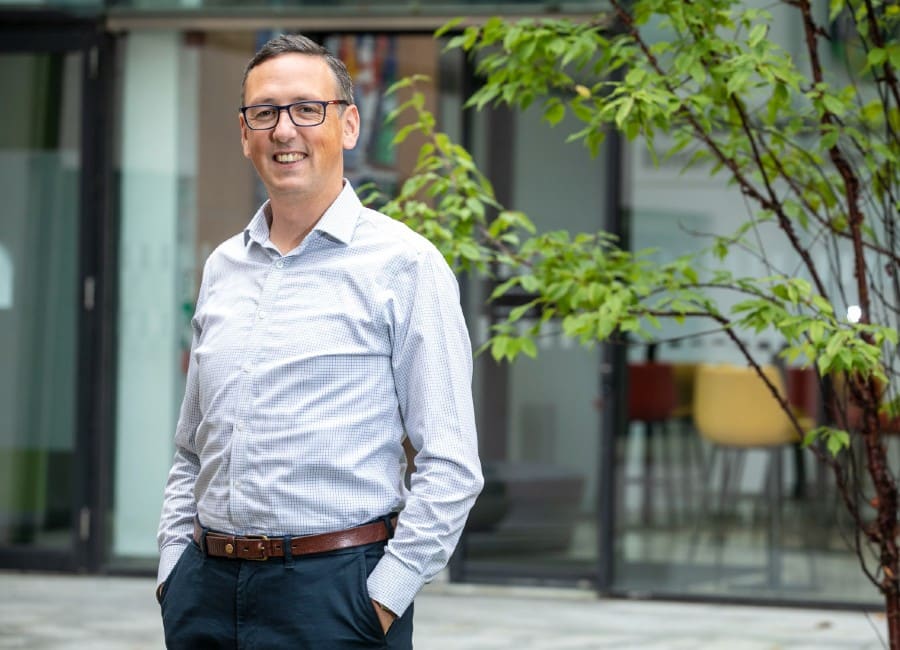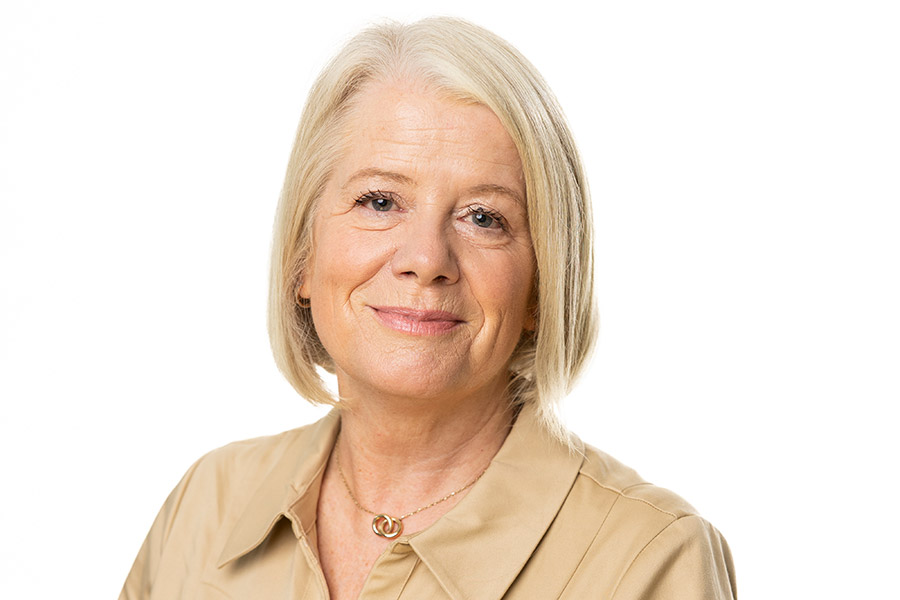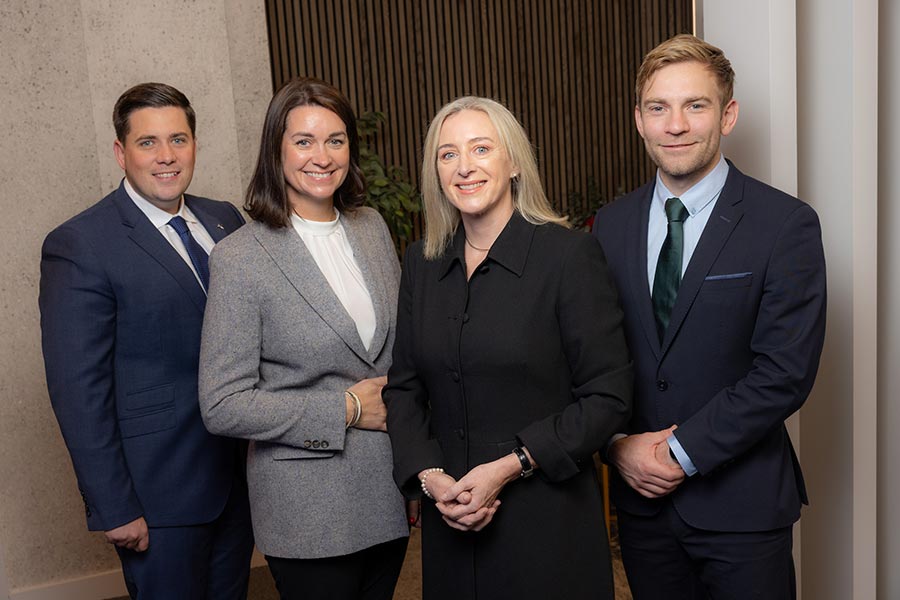Brendan Murphy (pictured), a tutor on UCD's Coaching for Impact at Work course, is fascinated by how people grow and develop and helping them get better at what they are doing.
Adopting a coaching approach is the most effective way of building high performing teams and helping individuals achieve their full potential, according to Brendan Murphy, a tutor on the Smurfit Executive Development Coaching for Impact at Work course. “Organisations not adopting it are finding themselves a little bit left behind the competition,” he says. “In terms of the major focus, we have gone past mechanisation and computerisation. It’s all about personalisation now. People are looking for purpose and meaning in their work and coaching is key to that.”
An executive coach, coach tutor and professional trainer, Murphy works with individuals to create positive change. Prior to embarking on his coaching career in 2018, he spent 17 years in the voluntary sector managing homeless projects including emergency hostels, as well as a variety of high-support housing projects.
“I have always been interested in creating learning opportunities and building skills within the teams I worked with,” he says. “I am fascinated by how people grow and develop and helping them get better at what they are doing. I am also very interested in resilience, how people respond to setbacks, and how to instil that in people. I’ve always been involved in training and coaching in one way or another.”
That interest and involvement led him to change career and move into coaching. “I looked around for courses and found that the UCD Diploma in Business and Executive Coaching was the best around. I did the course and absolutely loved it. I have been a tutor on the programme for the past four years.”
He explains that coaching is not about training people or telling them what to do. “Listening is at the heart of it,” he says. “It’s about asking questions instead of making statements. Coaching is all about questions. It’s about getting people to ask themselves questions. Not just any questions, but the right questions. What do I want to achieve? What’s getting in the way? Who might help? It’s about bringing the best out in people. If you are the type of leader who coaches people, you will have an empowered team of self-starters.”
Very importantly, coaching is non-directive. The coach doesn’t tell the person what they should do or where they should be going. The individual must decide that for themselves. “That’s not to say that it doesn’t have direction, the coachee sets the direction,” says Murphy.
Bringing a coaching mindset into the workplace has multiple benefits, he adds. “It helps people to change their thinking patterns and how they make decisions. It helps them challenge negative thoughts. People think they are not good enough, that there is someone better than them to do what they are doing. Coaching can free them of those damaging thoughts and allow them to move forward. We don’t often get the chance to think about how we are thinking. That’s where coaching can be fantastic. It can help us to change our thinking patterns to be more solution focused.”

He gives an example of an executive he has coached. “He was considering cutting back on his working hours but thought he would have to drop three or four levels to do that. I was quite puzzled by that until I found out that his current employer wouldn’t offer the flexibility for people to do that. He presumed that every other employer would be the same. But when he started looking at it properly, that wasn’t the case, and he was able to make the change. It was just a case of thinking about it differently.”
The three-day Smurfit Executive Development Coaching for Impact at Work course is designed for managers and leaders who would like to introduce a coaching style into their world of work. Participants’ coaching ability will be enhanced through gaining an understanding of various coaching models along with the latest principles and best practice.
“Not everyone has the time or resources to do the part-time accredited diploma programme,” says Murphy. “I am really excited about the short course. It has the potential to have a huge impact. It will help participants develop their coaching skills and the confidence to adopt a coaching approach.”
The programme combines academic input from world-class faculty, with practical experience, to produce deep, transferrable coaching skills, readily applicable to today’s working environment.
“We don’t just talk about coaching skills, we put them into practice,” he points out. “The programme is divided roughly equally between theory and practice. We look at the psychological aspects of coaching, how we interact with people, how we listen, how we have conversations with them, how we reflect, and how we give feedback, especially difficult feedback. Coaching skills are easy to describe but hard to do, that’s where the practical element comes in.”
The practical element sees tutors facilitating participants coaching other participants, being coached, and watching coaching sessions. “We encourage people to bring real issues into the sessions,” he says. “These might be difficult situations in the workplace, problems working with individuals, or issues within a team. Participants not only learn how to use coaching to deal with those issues, but they find out a lot about themselves as well. It’s a real virtuous circle. It’s amazing what can happen in a 20-minute session when people get honest feedback on what they are doing well in their coaching and what they might need to pay attention to. People come out with a sense of where they are going, where they want to go, how they are going to get there, and when.
Adopting a coaching mindset can also change people. “There is a lot of self-reflection involved,” Murphy explains. “This is where we find out a lot about ourselves, often things we never knew before.”
It can also help people form good habits. “This is absolutely essential for modern leaders,” he says. “Wendy Wood, Professor of Psychology at the University of Southern California and author of Good Habits, Bad Habits says 43 per cent of all our actions are habitual and done without conscious thought. But we must make sure that what we are pushing down into the unconscious is what we want there. Good habits help us to free our conscious minds to deal with the 1,001 other things we need to focus on.”
The way to form good habits is to make them obvious, attractive, easy, and rewarding to do. “You need to reduce the friction for good habits and increase it for bad ones,” he explains. “For example, if you find yourself distracted by Twitter during the day, make it harder to go there. Bury the bookmark to make it harder to get to. The same applies to good habits. If you leave your running shoes at the bedroom door it’s easier to go for a morning run. After that it’s a matter of habit stacking. If you already have one good habit, stack other good habits on top of it. There’s lots more to it, of course. You have to manage your internal and external triggers in order to manage your habits. And you don’t break habits, you replace them.”
He points to the case of an executive who wanted to get out of the habit of going to the canteen for cake every afternoon. “It turned out that he wasn’t going to the canteen for the cake, he was doing it for the social aspect of meeting up with the other people there. He didn’t stop going to the canteen, he just started eating an apple when he did it instead of the cake. Modern leaders are under a lot of pressure, when the form the right habits it frees up mental space to deal with that pressure.”
This is among the many skills which participants on UCD’s Coaching for Impact at Work course will learn. “It can be truly transformative,” says Murphy. “Participants will learn how to adopt a coaching mindset not only to improve the performance of the teams they lead but to become better leaders themselves.”










